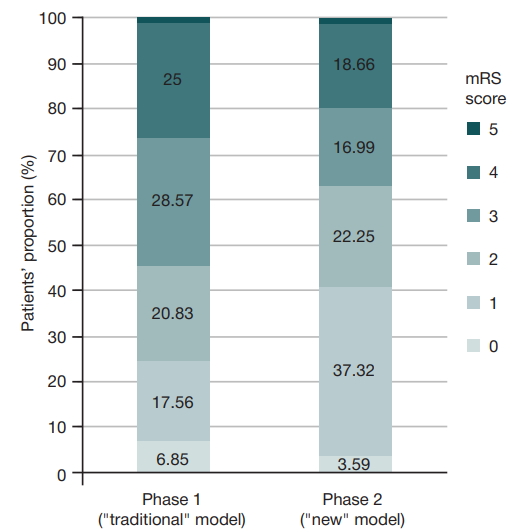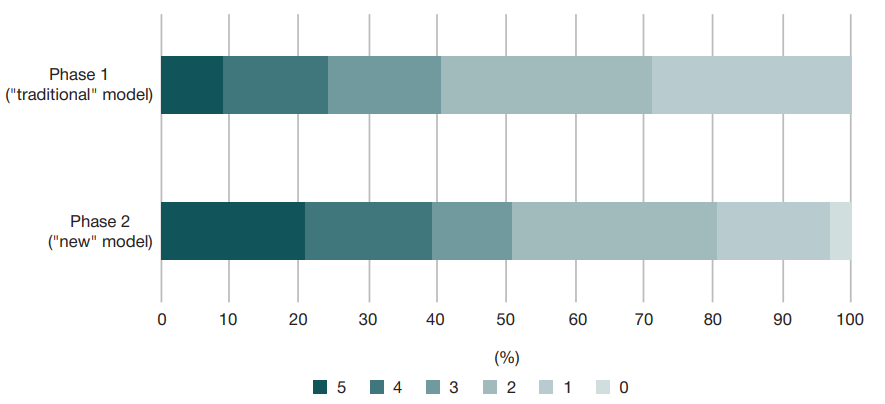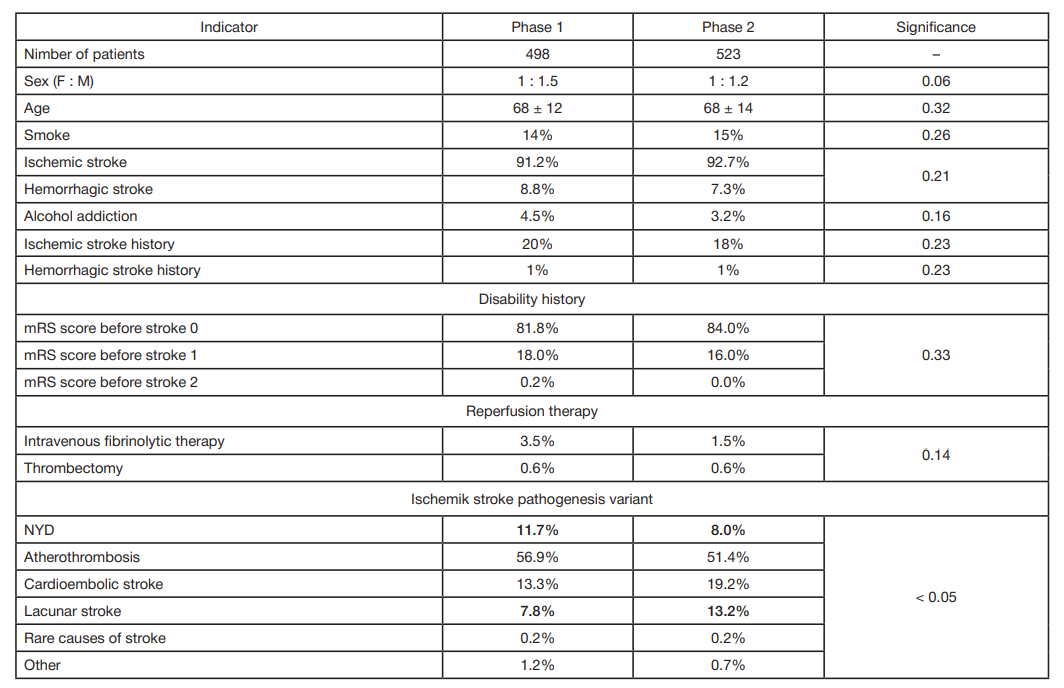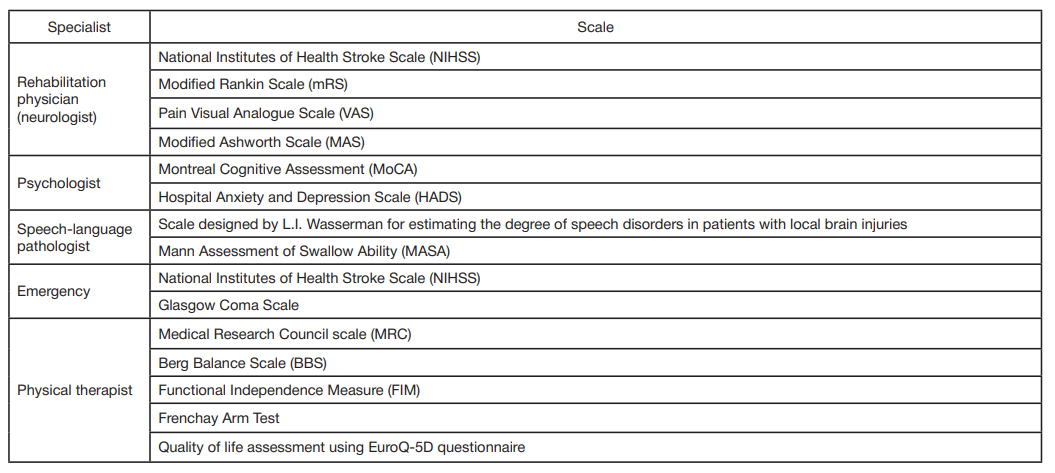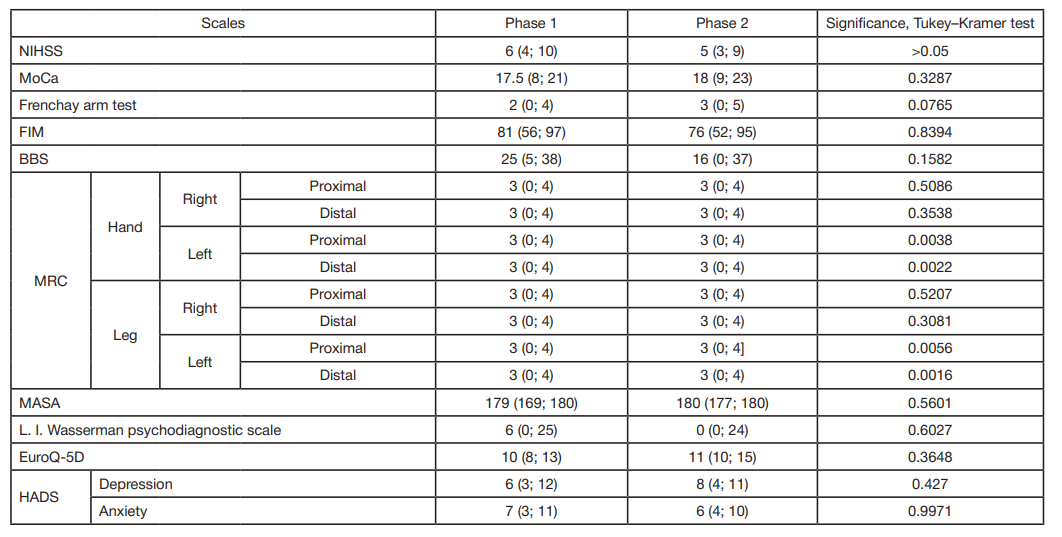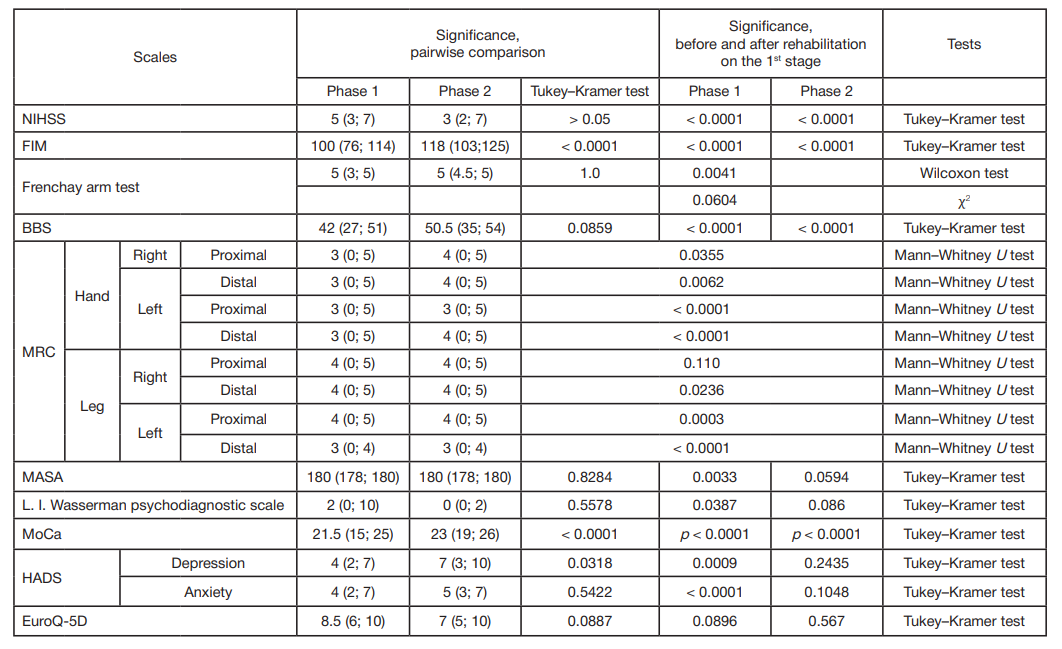
This article is an open access article distributed under the terms and conditions of the Creative Commons Attribution license (CC BY).
MISCELLANEOUS
Effectiveness of multidisciplinary team as a new model of after stroke patients’ rehabilitation
1 All-Russian Union Rehabilitators, Moscow, Russia
2 Pirogov Russian National Research Medical University, Moscow, Russia
3 Ural State Medical University of the Ministry of health, Yekaterinburg, Russia
4 Kazan State Medical Academy, Kazan, Russia
5 The First Saint-Petersburg State Medical University named after Academician I. P. Pavlov, Saint-Petersburg, Russia
6 Voino-Yasenetsky Krasnoyarsk State Medical University, Krasnoyarsk, Russia
7 Kazan State Medical University, Kazan, Russia
8 City Hospital № 26, Saint Petersburg, Russia
9 Research Center of Cerebrovascular Pathology and Stroke, Ministry of Health of the Russian Federation, Moscow, Russia
Correspondence should be addressed: Andrey Yu. Suvorov
Ostrovityanova, 1–10, Moscow, 117342;
ur.liam@vorovus_rd
Funding: Territorial Federal Compulsory Medical Insurance Fund, Ministry of Health of the Russian Federation and the Ministry of Education and Science of the Russian Federation universities budget funds, All-Russian Union Rehabilitators funds.
Acknowledgements: Yulia Buryak, neurologist of Pavlov First Saint Petersburg State Medical University. Victoria Kasatkina, neurologist of City Alexandovskaya Hospital. Ekaterina Lobachyova, 6th year student of Pavlov First Saint Petersburg State Medical University
